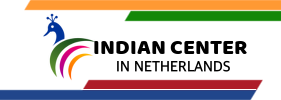Dutch public transportation companies provide frequent services on buses, trams and trains all over the Netherlands. Therefore, public transport is a great way to travel through and between towns, cities and rural communities.
To plan you travel you can use to Mobile app as mentioned below
9292 to plan your journey on any type of public transport!
Reisplanner Xtra to plan your journey in NS train
OV-chipkaart
The Netherlands’ public transportation card is called the ‘OV- Chipkaart‘.
The OV-chipkaart (short for openbaar vervoer chipkaart, meaning public transport chipcard) is a contactless smart card system used for all public transport in the Netherlands. First introduced in the Rotterdam metro in April 2005, it has subsequently been rolled out to other areas and travel modes. It fully replaced the national strippenkaart system for buses, trams and metros in 2011 and the paper ticket system for rail travel in July 2014.
The OV-chipkaart is available in disposable form (for occasional passengers, such as tourists) and reusable versions (for frequent travellers, either in anonymous or personalized forms).
There two types of OV-chipkaart: the personal OV-chipkaart and the anonymous OV-chipkaart
Anonymous public transport chip card Cost € 7.50
- to be used by several people (not at the same time)
- for sale at stations, at counters of transporters, supermarkets, tobacconists and at OVshop.nl (the Chip Bizz webshop)
- online overview of trips and costs incurred
- valid from the production date for 5 years
Personal OV chip card Cost € 7.50
- suitable for subscriptions and age discounts
- balance automatically
- online overview of trips and costs incurred
- block in case of loss or theft
- Valid for 5 years
If you want to request your card online, you will need a good-looking digital photo and iDEAL.
Note : do you have an (almost) expired card? Then renew your card . We transfer your subscription to your new card.
Driving
The Netherlands has an excellent infrastructure of ports, airports, and roadways. This does not come as a surprise as the Netherlands is one of the major points of entry for goods imported into Europe.
The Driving in Netherlands is Left Hand driving wherein in India is Right Hand Driving hence you need to be aware of the left hand driving system and also need to know the Rule and Regulation as well as Traffic Symbols as it is different compare to India
The most important advice for new drivers in the Netherlands is to watch out for cyclists, especially when turning! The Netherlands is known for its vast amount of cyclists and these do not take most regulations that strictly. Driving in the city can be stressful and finding a parking spot even more so, the public transport is a much more convenient and relaxing way to travel.
Rules and regulations
To avoid getting involved in these accidents, it is recommended you know these rules:
Drive on the right, overtake on the left.
Motorcycle drivers and passengers must wear crash helmets, this is obligatory.
It is compulsory to carry a driving licence, car registration papers and insurance documents in the car (Dutch, EU and International Driving Licences are accepted).
Mobile phones may only be used with a hands-free system while driving. Even holding a mobile in a moving vehicle is considered an offence and will cost you a lot of money. Dutch people are really against calling without a hands-free system.
Seat belts are compulsory.
Drivers should pay particular attention to cyclists who may ride next to each other and often have a way of right. Especially younger cyclists ride in groups and require extra attention.
Unless otherwise signposted, vehicles coming from the right have priority.
Buses have priority when pulling out.
Trams have priority except where signposted at major junctions.
But what happens if you follow those rules and an accident still happens? Here is what you should do at all times!
Stop immediately, driving off after an accident is an offence in the Netherlands!
Try to get the car(s) to the side of the road.
Use hazard lights and place a red warning triangle 30m from the scene to warn oncoming traffic
After everyone is safe you must exchange your details. These include:
Name and address of all the people involved in the accident, if possible from witnesses as well
Vehicle registration numbers
Details of the insurance companies
Fill in the claim forms. Always do this! Some people are known to tell lies and tell you it won’t be necessary but the claim forms must be sent to the insurance company. There is no time limit yet it’s best to do this as quickly as possible.
If possible, take a photograph of the scene of the accident
Accidents involving an injury or a fatality require other actions (besides doing the above):
Contact the police and call an ambulance. Both can be done at the same time via 112.
The police will make an official report and a copy of this report can be requested. Write to: Stichting Processen Verbaal (The Foundation for Police Reports in Dutch), which can be reached at: Postbus 7070, 2701 AB Zoetermeer (Tel: +31 (0) 79 322 98 67)
If the police do not attend the scene of the accident, those involved must collect the names and addresses of all relevant parties and witnesses. The European claim form may be used and signed by all
Remember that leaving the scene of an accident without providing information is considered an offence as well!
Note: Suggestion to have few Driving class to know more about the Netherlands Driving Rules and Regulation
